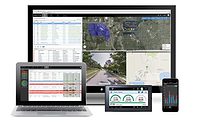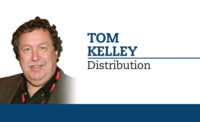Beverage fleet training essential for fleet safety, efficiency
Maintaining driver training program essential

In today's business world, the toughest expenses to plan for are the direct and indirect costs that arise from meeting regulations and the instable regulatory environment. Since Beverage Industry began conducting its Annual Fleet Survey in 2013, just more than a third of the respondents have consistently listed regulatory compliance costs among their Top 3 operational concerns. Additionally, an average of 22 percent of respondents consistently listed regulatory instability among their Top 3 operational concerns.
Uncertain estimates
One of the key reasons that it's so difficult to project the costs of complying with regulations is that when regulatory agencies are required to provide estimates of compliance costs, these estimates can be wildly inaccurate, making them virtually useless for any long-term planning.
When reviewing the regulator's projections of just more than $5,000 a truck to meet 2004-2010 emission regulations, the American Truck Dealers (ATD) found actual acquisition cost increases of more than $21,000 a truck for heavy-duty models, and similarly inaccurate projections for medium-duty models.
Worse yet, these added costs only addressed equipment acquisition, not any of the costs related to increased fuel consumption, maintenance or downtime that might be caused by the mandated emission control hardware.
Learning from experience
The main takeaway from emission regulations of the past decade is that fleet managers should be wary of any projections made when new regulations are proposed.
Costs will be invariably higher, even exponentially so; and promised benefits are likely to be exceeded by complications. Learning this lesson now is even more critical, as the focus has moved to regulation of carbon dioxide emissions by way of fuel economy mandates.
Many truck operators already are so cost-conscious that they track fuel-economy down to the tenth, or even hundredth, of a mile for each gallon.
Although truck manufacturers and buyers likely will meet the deadlines for the fuel economy mandates, it possibly could be at the cost delaying safety-development programs and a lost opportunity to reduce fuel consumption by addressing traffic congestion.
Little positive to be found
Whenever truck operators do see a benefit from regulation, such as tax-relief to help jump-start advanced truck technology, the unstable nature of these incentive programs prevents their incorporation into any long-term planning.
For example, the emergence hybrid-truck market — with considerable interest in the beverage industry — was stagnated after tax incentives for hybrid trucks were eliminated.
Now that the beverage industry has been a major participant in launching the market for natural-gas-powered trucks, how long might it be before the whim of regulation strikes again and wipes out the business case for natural gas powered trucks?
Is there a better way?
The underlying presumption behind many regulations is that absent the force of government, a desired improvement would not be accomplished. After all, there's no bottom-line benefit in cleaning up exhaust emissions, is there?
There are a number of fallacies behind this regulatory assumption. One of the biggest fallacies is that the regulators' chosen method will deliver the most effective results.
As noted above, two of the most recent sets of emission regulations resulted in costs of more than $20,000 for each truck and only delivered infinitesimal reductions in exhaust emissions, as the majority of improvements had long since been accomplished.
Meanwhile out in the free market, the beverage industry was making some changes on its own to reduce emissions.
Because of SKU proliferation and distributor/bottler consolidation, much of the industry began a paradigm-shifting change from traditional side-load truck bodies and trailers to cargo-style end-load bodies and trailers. Although this change was originally inspired by physical logistics of the delivery process, the resulting productivity improvements have allowed fleets to consolidate routes, reduce overall fleet travel miles and significantly bring down exhaust emissions.
Similarly, as competition drove operating cost containment, more fleets deployed route/load optimization software, further reducing fleet travel miles and exhaust emissions.
So which path makes more sense? Is it better to make minuscule emission reductions at a huge, unrecoverable cost, or huge emission reductions resulting from productivity improvements that deliver a return on investment? Regulations rarely outperform the free market.
Doing your part
Unfortunately, when it comes to management of regulatory expectations, the lobbying organizations that represent the truck manufacturers and the overall truck industry have a bit too much of a “go along to get along” strategy, preferring to at least be at the table in the regulatory process.
As such, it's absolutely necessary for bottler and distributor executives to take an active role in the regulatory process. Because there is strength in numbers, it’s also important to support and actively participate in the associations that represent the beverage industry.
Looking for a reprint of this article?
From high-res PDFs to custom plaques, order your copy today!






